News Articles
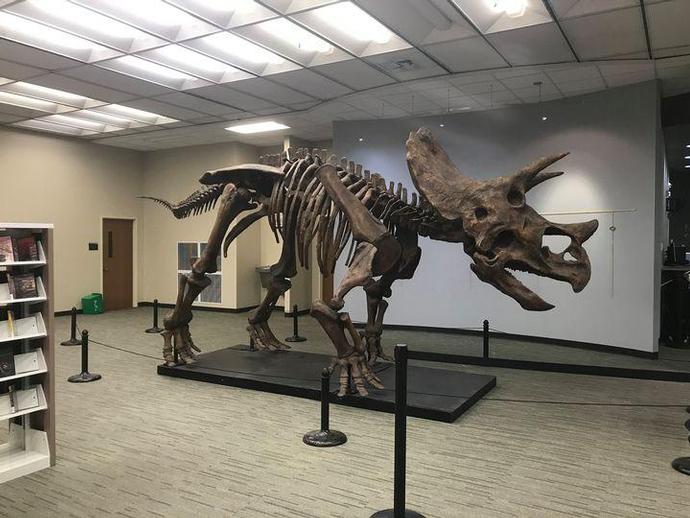
Success!
June 30, 2021
Success!! Crew members from the museum were at the Waynesboro Public Library today to install a life-size cast skeleton of a Triceratops, which will remain on display for approximately a year! While assembly can be challenging, our expert staff were able to tame the beast in only a matter of hours! If you're in the area, be sure to stop by and check it out!
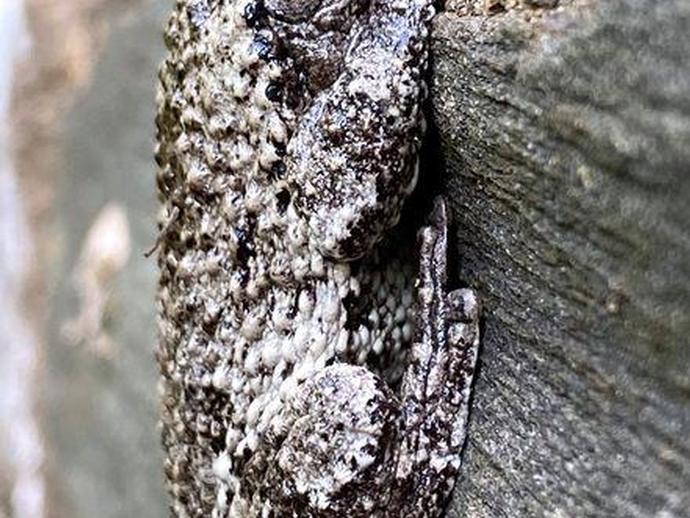
It's time for the Wednesday edition of #BenInNature presented by our friends at Carter Bank & ...
June 30, 2021
It's time for the Wednesday edition of #BenInNature presented by our friends at Carter Bank & Trust! I photographed this tree frog at Fairy Stone State Park a couple of weeks ago. This is normally the part where I'd tell you the scientific name of this little guy, but with these particular treefrogs, it's a little bit complicated! In Virginia, we have two species of treefrog that are virtually identical: Hyla versicolor, the gray treefrog, and Hyla chrysoscelis, the Cope's gray treefrog. Both species are pretty common, and both have a lot of overlap in their ranges (although generally speaking, you're more likely to find the gray treefrog in the central part of Virginia and Cope's gray treefrog in the eastern and ...

FREE ADMISSION THIS SUNDAY FROM NOON TO 4PM!
June 29, 2021
FREE ADMISSION THIS SUNDAY FROM NOON TO 4PM!

It's time for another edition of #BenInNature presented by our friends at Carter Bank & Trust!
June 29, 2021
It's time for another edition of #BenInNature presented by our friends at Carter Bank & Trust! I'm always excited to see interesting moths show up to my porch, and Darapsa myron, the Virginia creeper sphinx, is an excellent example! As the name suggests, the larvae of these large moths feed on Virginia creeper (Parthenocissus quinquefolia), peppervine, and grape vines. The caterpillars hide amongst the vines during the day and come out to feed on the leaves at night. The adults, meanwhile, feed on flower nectar and juices from rotting fruit, although like many moths, the adults sometimes don't feed at all. These moths are fairly common in the eastern half of the U.S., and in large parts of their range, they'll have ...

Calling all entomologists, future entomologists, and lovers of all things bugs!
June 28, 2021
Calling all entomologists, future entomologists, and lovers of all things bugs! VMNH is hosting Bug Day 2021 on Saturday, July 24 and we want to see YOU at the museum! Pre-registration required! Bug Day 2021 will feature the museum's scientists and researchers showing-off a large variety of insects from the museum's entomology collections that are rarely exhibited to the public, including some of our fossil insects! The event will also offer a variety of live insects on display, preserved non-insect invertebrates, insectivorous mammal museum specimens, and bug-themed activities for children and youth! Museum experts will also be on hand to demonstrate insect sweeping techniques and how scientists pin bugs for entomology ...

Ben here with the Monday edition of #BenInNature presented by our friends at Carter Bank & Trust!
June 28, 2021
Ben here with the Monday edition of #BenInNature presented by our friends at Carter Bank & Trust! The delta flower scarab (Trigonopeltastes delta) is named for the distinctive yellow triangle on its pronotum (the little plate right behind the head), which is shaped like the Greek letter delta. It's believed that the delta flower scarab evolved this yellow triangle because it helps deter predators, since it makes the beetle superficially resemble many different wasps! Delta flower scarabs can be found in the southeastern U.S. from late spring through summer. This particular beetle was spotted at Fairy Stone State Park near the dam. As larvae, these beetles feed on decaying wood and organic matter, and as adults, they feed ...

FOOD TRUCK WEEK!
June 28, 2021
FOOD TRUCK WEEK! Satisfy your morning cravings at the museum this week! Roots&Leaves is open for business in the museum's main parking lot from 8 a.m. to noon today through Saturday! They'll be serving a variety of coffee (espresso, latte, cappuccino, etc.), as well as vegan croissants! *Please note that the museum is currently closed to visitors Monday through Wednesday and will be open from 10 a.m. to 4 p.m. on Thursday through Saturday. **Beginning July 1, the museum will return to a full operating schedule! Starting July 1, the museum will be open to visitors Tuesday - Saturday from 10 a.m. to 4 p.m. and Sunday from Noon to 4 p.m.

We're reaching into the archives for today's #BenInNature update presented by our friends at ...
June 27, 2021
We're reaching into the archives for today's #BenInNature update presented by our friends at Carter Bank & Trust! The following post was originally published on July 6, 2020. With its bright red horn-shaped flowers, trumpet vine (Campsis radicans) is easy to spot. This showy vine is native to the eastern U.S., but it has also been naturalized in the western part of the country. Trumpet vine is popular with gardeners since it's easy to grow and attracts hummingbirds. It doesn't need a great deal of water or particularly fertile soil to thrive, and it will send out dozens of tendrils that grab onto any available surface, making it easy to shape. Of course, if you're a regular reader of these nature updates, you probably ...

We're reaching into the archives for today's #BenInNature update presented by our friends at ...
June 26, 2021
We're reaching into the archives for today's #BenInNature update presented by our friends at Carter Bank & Trust! The following post was originally published on July 5, 2020. At first glance, this insect looks like a wasp, but it's actually a fly! This is Mydas clavatus, the clubbed Mydas fly. Mydas flies are a comparatively small family; there are 471 described species worldwide. They're generally large in size, and the family even contains the largest fly known to man: Gauromydas heros, a South American species with a four-inch wingspan! Despite their size and intimidating appearance, Mydas flies are perfectly harmless. While this species has evolved to resemble a spider wasp -- and will even jab its abdomen in an ...

FOOD TRUCK SATURDAY & SUNDAY!
June 26, 2021
FOOD TRUCK SATURDAY & SUNDAY! Satisfy your morning cravings at the museum today and tomorrow! Roots&Leaves is now open for business in the museum's main parking lot from 8 a.m. to around noon today and will be BACK AGAIN TOMORROW MORNING (Sunday, June 27) from 8 a.m. to noon! They'll be serving a variety of coffee (espresso, latte, cappuccino, etc.), as well as vegan croissants! *Please note that the museum is open to visitors from 10 a.m. to 4 p.m. today and open from Noon to 4 p.m. on Sunday.
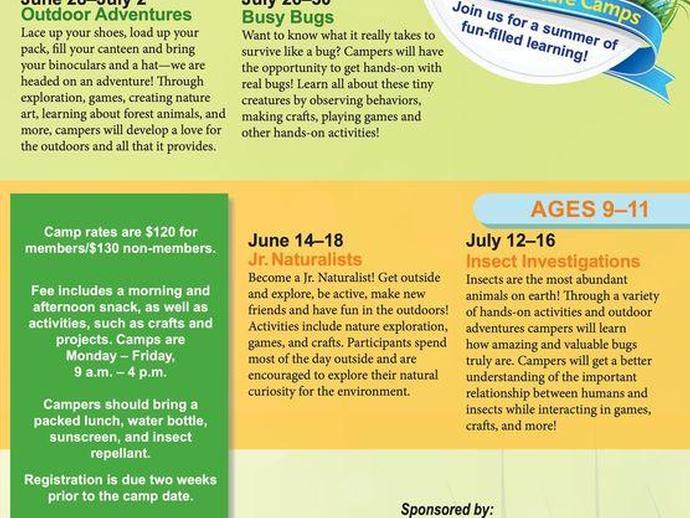
Only a few spots remain open for our last two Summer Adventure Camps of 2021!
June 25, 2021
Only a few spots remain open for our last two Summer Adventure Camps of 2021! The "Insect Investigations" camp for ages 9-11 is from July 12-16 and the "Busy Bugs" camp for ages 6-8 is from July 26-30! Learn more about these camps and register online at www.vmnh.net/education/summer-adventure-camps!
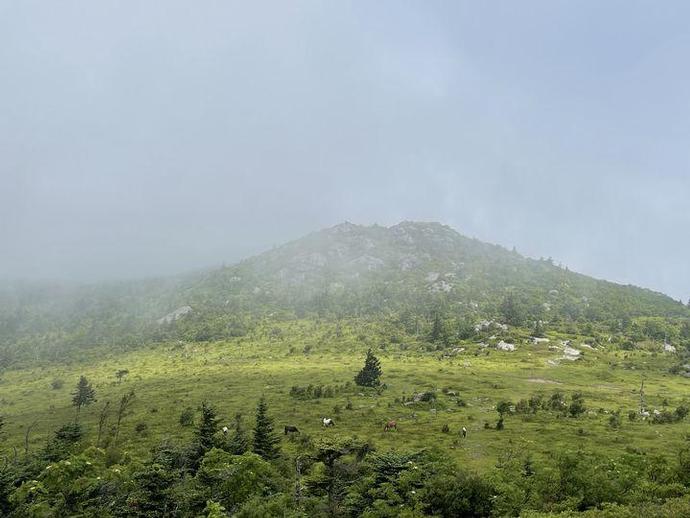
This week, Associate Curator of Recent Invertebrates Dr
June 25, 2021
This week, Associate Curator of Recent Invertebrates Dr. Kal Ivanov and Myriapodologist Dr. Jackson Means set out to hike Mt. Rogers in Grayson County, Virginia. Mount Rogers is the highest mountain in Virginia, with an elevation of over 1,700 meters. It is also home to the most northern Southern Appalachian spruce-fir forest, and Drs. Ivanov and Means were intrigued to see arthropod fauna they could find so far up. They set off early in the morning, when the trail was shrouded amongst the clouds, providing the first leg of the journey a mysterious and otherworldly ambiance. Along the way, Drs. Ivanov and Means found numerous interesting critters, including multiple species of salamander (one of which was the rare and ...
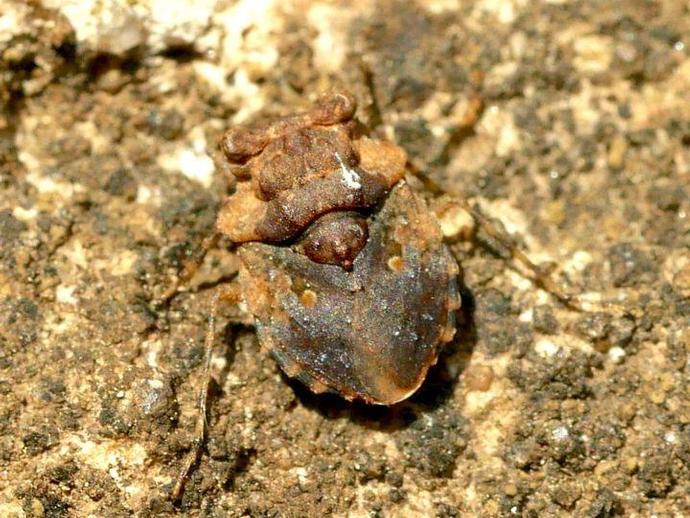
Ben here with the Friday edition of #BenInNature presented by our friends at Carter Bank & Trust!
June 25, 2021
Ben here with the Friday edition of #BenInNature presented by our friends at Carter Bank & Trust! The big-eyed toad bug (Gelastocoris oculatus) is not an easy critter to spot! These insects are pretty common throughout North America and Central America, and they're found on the muddy shores of streams and lakes. However, their variable coloration helps them blend in perfectly with their environment. When combined with their tiny size (6-9 mm) it's easy to pass right by one! With their bulging eyes, brown coloration, and hopping movement, toad bugs can easily be mistaken for tiny toads, hence the common name. The taxonomic name is a bit more mean-spirited; "gelasto" is Greek for "laugh," while "coris" is Greek for "bug," ...

FOOD TRUCK SATURDAY!
June 25, 2021
FOOD TRUCK SATURDAY! Roots&Leaves will be set up in the museum's main parking lot tomorrow morning (Saturday, June 26) from 8 a.m. to around noon serving a variety of coffee (espresso, latte, cappuccino, etc.), as well as vegan croissants! Deliciousness awaits! *Please note that the museum will be open from 10 a.m. to 4 p.m. on Saturday.
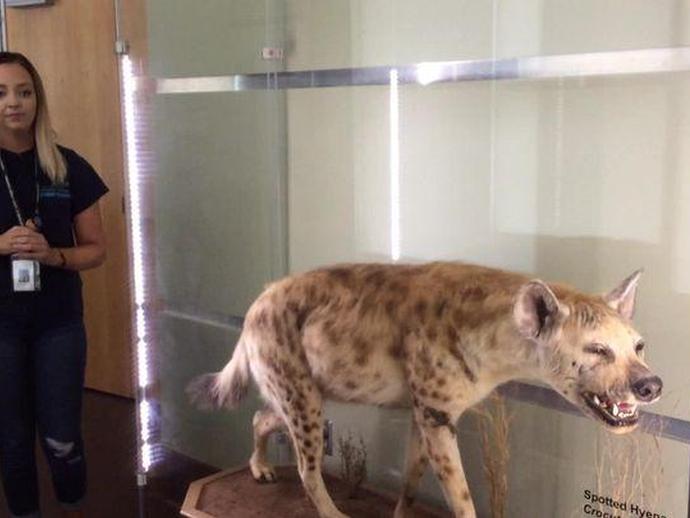
Hunter and prey are in the spotlight of this week's episode of "Museum Minute"!
June 25, 2021
Hunter and prey are in the spotlight of this week's episode of "Museum Minute"! VMNH Educator Terri Robertson is inside the Hahn Hall of Biodiversity to highlight the museum's hyena and springbok displays, and provides a very interesting tidbit about the springbok's ability to go very long periods of time without drinking water! ABOUT MUSEUM MINUTE The Virginia Museum of Natural History has a spectacular assortment of displays within its exhibit galleries! Some displays are unforgettable, while others don't always get the attention they deserve. Through the original series "Museum Minute", museum educators highlight various displays throughout the exhibit galleries, while providing intriguing facts you may not have known. ...
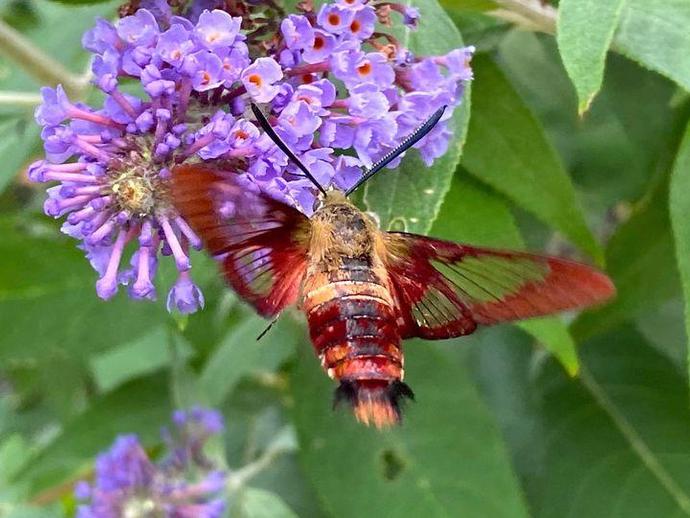
It's time for the Thursday edition of #BenInNature presented by our friends at Carter Bank & ...
June 24, 2021
It's time for the Thursday edition of #BenInNature presented by our friends at Carter Bank & Trust! Here's something cool that I spotted this week in the pollinator garden right in front of VMNH: Hemaris thysbe, the hummingbird clearwing moth! There are four different species of Hemaris that can be found in North America. Back in April we looked at Hemaris diffinis, the snowberry clearwing moth, which is black and yellow and strongly resembles a carpenter bee or bumblebee. Hemaris thysbe is probably the most popular (and arguably the most attractive) of the North American hummingbird moths, and with its green and red coloration, it can easily be mistaken for a ruby-throated hummingbird (Archilocus colubris) when it ...

It's time for another edition of #BenInNature presented by our friends at Carter Bank & Trust!
June 23, 2021
It's time for another edition of #BenInNature presented by our friends at Carter Bank & Trust! This is a beetle larva belonging to the genus Phengodes, and it's one of the most fascinating beetles you're liable to find! Also known as "glow-worm beetles" or "railroad worms," Phengodes larvae are predators of millipedes. The way these larvae eat millipedes isn't for the faint of heart. When one finds a millipede, it bites the thin membrane between its head and its first trunk segment and injects a paralytic toxin that not only immobilizes the millipede but also prevents it from releasing cyanide (many millipedes release small amounts of cyanide as a defense, and it smells like almonds or cherries). After the millipede is ...

Celebrate Independence Day this year with Clawd and the rest of the gang at VMNH!
June 22, 2021
Celebrate Independence Day this year with Clawd and the rest of the gang at VMNH! To commemorate the holiday, the museum is offering FREE ADMISSION to all visitors on Sunday, July 4, 2021 from noon to 4pm! Come discover several of our new and updated exhibits, including "Lepidoptera", which features a few of our favorite RED, WHITE, & BLUE butterflies, moths, and skippers! The first 250 visitors will receive a free 6" x 4" American flag! #WhatWillYouDiscover
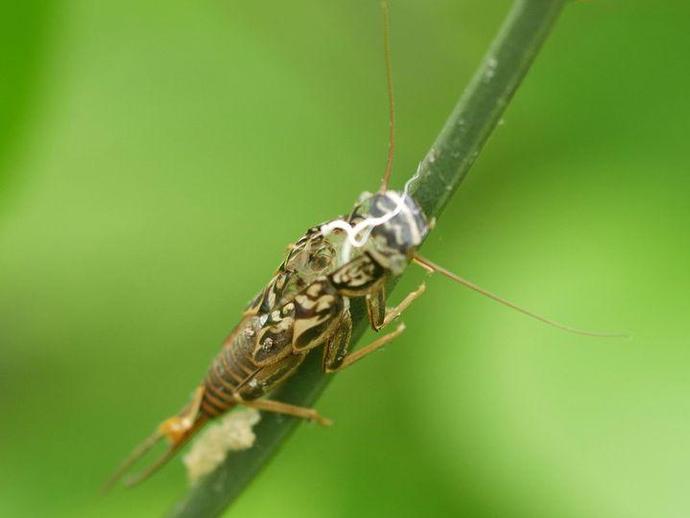
It's time for the Tuesday edition of #BenInNature presented by our friends at Carter Bank & Trust!
June 22, 2021
It's time for the Tuesday edition of #BenInNature presented by our friends at Carter Bank & Trust! I've been seeing a lot of newly-emerged stoneflies around my back porch light just lately, and I thought it might be interesting to take a look at exactly what stoneflies emerge FROM. This is a stonefly exuvia, which is the cast-off outer shell of an arthropod that is left behind after it molts. The best known example of exuvia is probably the cicada shells that you find on your trees when cicadas emerge. However, many insects leave behind exuvia after molting, as do arachnids such as spiders and crustaceans such as crabs and lobsters! Stoneflies belong to the order Plecoptera, which contains more than 3,500 species ...
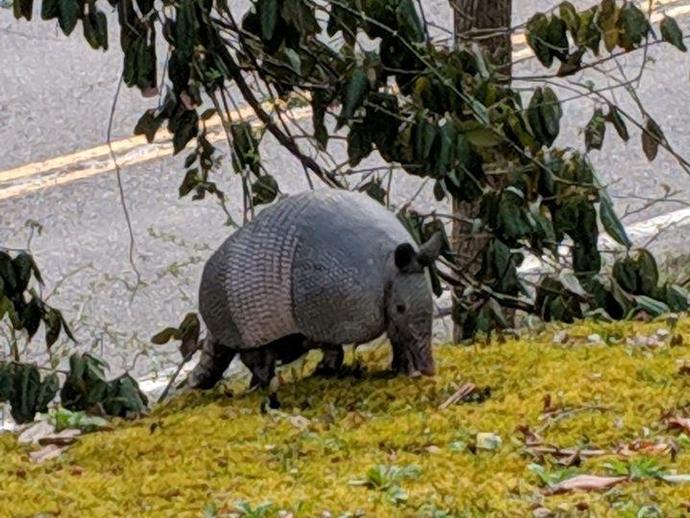
Armadillos in Virginia?
June 21, 2021
Armadillos in Virginia? Often associated with the southwestern United States, the range of the Nine-banded armadillo (������� ������������) has been expanding into the southern and midwestern U.S. since the mid-1800s. In an article recently published in the Southeastern Naturalist, VMNH Curator of Mammals Dr. Nancy Moncrief, along with colleagues Michael Fies and Seth Thompson, both of the Virginia Department of Wildlife Resources (VDWR), document recent evidence of armadillos in southwestern Virginia from verified photographs submitted to VDWR and voucher specimens deposited into the mammal ...

It's time for today's edition of #BenInNature presented by our friends at Carter Bank & Trust!
June 21, 2021
It's time for today's edition of #BenInNature presented by our friends at Carter Bank & Trust! You've probably seen water striders (family Gerridae) before, skating along the water's surface with ease. These guys can survive on pretty much any pond, river, or lake, and about 10 percent of the more than 1,700 species of water striders can even be found in marine environments. In fact, a few species of oceanic water striders (genus Halobates) live out in the open ocean and are only found near the coast when storms blow them inland, making them the only oceanic off-shore insects known to science! At first glance, water striders appear to only have four legs, but like all insects, they actually have six; the front pair of ...

FOOD TRUCK SATURDAY!
June 21, 2021
FOOD TRUCK SATURDAY! Roots & Leaves will set up shop in the museum's main parking lot this Saturday morning (June 26) from 8 a.m. to around noon serving a variety of coffee (espresso, latte, cappuccino, etc.), as well as vegan croissants! Deliciousness awaits! *Please note that the museum will be open from 10 a.m. to 4 p.m. on Saturday. Learn more about Roots&Leaves!
BACKYARD EVOLUTION! The Bergland lab from the Biology Dept
June 21, 2021
BACKYARD EVOLUTION! The Bergland lab from the Biology Dept. at the University of Virginia is recruiting Citizen Scientists to participate in an international project to sample and collect small flying insects from your compost pile over the summer, fall, and early winter. Their goal is to characterize the species composition of fruit flies (drosophilids) with a particular focus on the genetic model species, Drosophila melanogaster. They will use these samples to study the migration dynamics of D. melanogaster and study the genetic basis of adaptation across the growing season. Please contact virginia.backyard.flies@gmail.com for more information or learn more via the link below!

We're reaching into the archives for today's #BenInNature update presented by our friends at ...
June 20, 2021
We're reaching into the archives for today's #BenInNature update presented by our friends at Carter Bank & Trust! The following post was originally published on July 4, 2020. There's a good chance that a lot of folks out there are going to spend today gathering with (a hopefully very small and safely-distanced group of) friends, grilling some delicious meats, shooting off fireworks, and maybe even taking a dip in a pool. And if you do that last one, you might encounter today's highlight, the horse-fly! This particular horse-fly is Tabanus fulvulus. Horse-flies have been recognized in literature since the Ancient Greek playwright Aeschylus wrote that they drove people to madness. Mankind's opinion of the horse-fly has ...

We're reaching into the archives for today's #BenInNature update presented by our friends at ...
June 19, 2021
We're reaching into the archives for today's #BenInNature update presented by our friends at Carter Bank & Trust! The following post was originally published on July 3, 2020. I was sitting on my front porch the other afternoon when I saw something that looked like a tiny piece of fluff fly by. Naturally, I followed it, and I discovered that a plant in my front yard was covered in woolly aphids! Woolly aphids belong to the subfamily Eriosomatinae, and like most aphids, they suck sap out of plant tissue. Different species of woolly aphids target different plants, and since they can cause cosmetic damage to ornamental plants, they're often considered a pest insect (fortunately, the woolly aphids in my front yard are ...
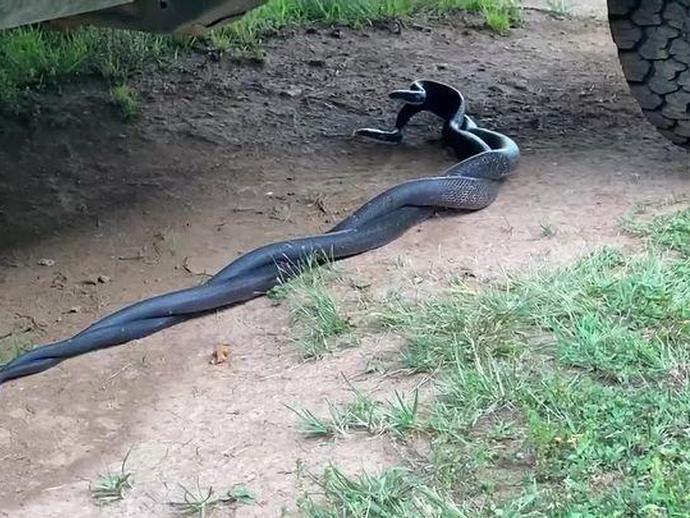
It's time for today's special video edition of #BenInNature presented by our friends at Carter ...
June 18, 2021
It's time for today's special video edition of #BenInNature presented by our friends at Carter Bank & Trust! Well, here's something you don't see every day! I was sitting on my front porch the other day when I heard some sort of commotion coming from underneath my car. I strolled over to find two eastern rat snakes (Pantherophis alleghaniensis) preparing to mate! Want to know how rat snakes mate? Read on, but be warned: it might get a little graphic. I'll try to keep it professional, though. From May to late June, male rat snakes will begin searching for females. If they encounter another male rat snake near a female, a fight will usually break out, with the less dominant male slinking away. If the female is receptive, ...
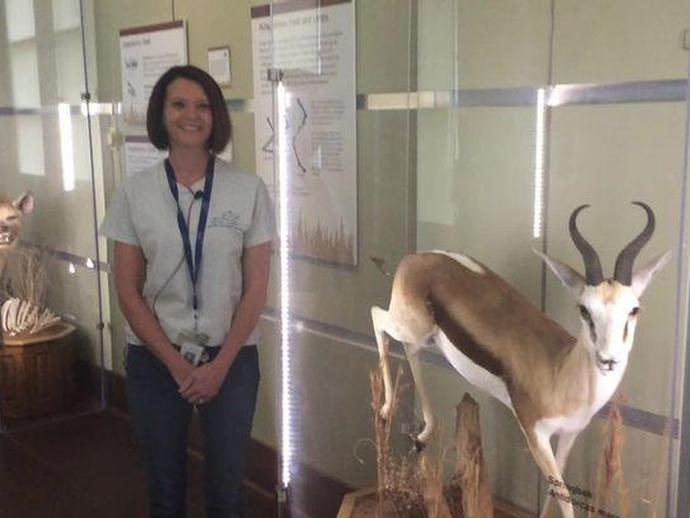
African antelopes demonstrate an extraordinary diversity of behavioral and physical traits
June 18, 2021
African antelopes demonstrate an extraordinary diversity of behavioral and physical traits. In this episode of "Museum Minute", VMNH Education Manager Christy Deatherage is inside the Hahn Hall of Biodiversity to highlight several antelope specimens on display and the traits that make them unique! ABOUT MUSEUM MINUTE The Virginia Museum of Natural History has a spectacular assortment of displays within its exhibit galleries! Some displays are unforgettable, while others don't always get the attention they deserve. Through the original series "Museum Minute", museum educators highlight various displays throughout the exhibit galleries, while providing intriguing facts you may not have known. "Museum Minute" is made possible ...

It's time for today's edition of #BenInNature presented by our friends at Carter Bank & Trust!
June 17, 2021
It's time for today's edition of #BenInNature presented by our friends at Carter Bank & Trust! I had always thought of dung beetles as critters unique to Africa, rolling animal droppings into perfect little balls and pushing them across the savanna. However, we have a number of dung beetles right here in Virginia, including this little guy: Canthon chalcites, also known as one of the "tumblebugs!" Dung beetles feed on droppings and many species also use them for breeding chambers. There are three basic kinds of dung beetles: tunnelers, which bury animal droppings when they come across them; dwellers, which just live in droppings; and rollers, which roll droppings into round balls. Canthon chalcites is a roller! Dung ...
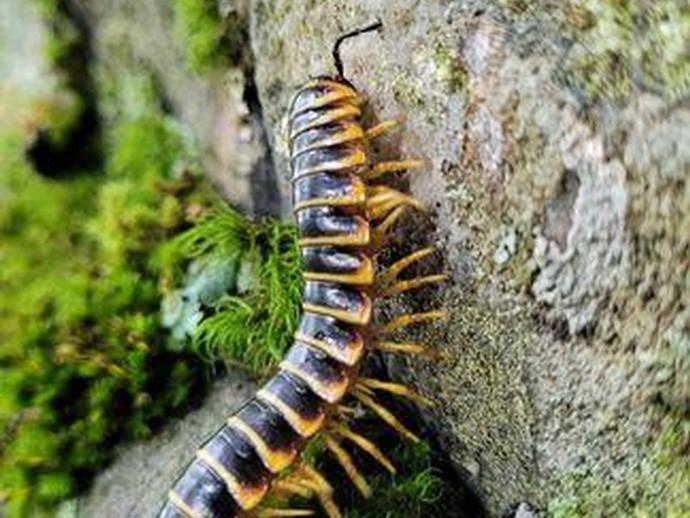
It continues to warm up outside ...
June 17, 2021
It continues to warm up outside, which means a lot of moisture-loving critters are burrowing underground, hiding within and under logs, and crawling between rock crevices to ride out the hot summer months. But not to worry! On cool mornings after a big rain, you can still find lots of interesting forest creatures going about their lives. Associate Curator of Recent Invertebrates Dr. Kal Ivanov and Myriapodologist Dr. Jackson Means traveled to West Virginia after several days of rain this week to look for undescribed species of millipedes and they struck gold, finding not one - but two - species new to science! They also enjoyed the incredible views on display at the New River Gorge National Park. Now is the time to get ...

Summer Adventure Camps are back at VMNH! This week, the museum is hosting the "Jr
June 17, 2021
Summer Adventure Camps are back at VMNH! This week, the museum is hosting the "Jr. Naturalist" Summer Adventure Camp for ages 9-11! Focussing on the great outdoors, campers are taking part in nature hikes and outdoors games, as well as spending time inside the museum for craft creation and exhibit tours! There is still time to sign-up for our remaining Summer Adventure Camps! However, remaining spaces are very limited. The week-long, day camps are offered to campers ages 6-8 and 9-11 and take place from 9 a.m. to 4 p.m. at the museum and nearby Frank Wilson Park. Visit www.vmnh.net/education/summer-adventure-camps to learn more and register online!

A groundbreaking ceremony was held today on the grounds of VMNH to celebrate the future site of ...
June 16, 2021
A groundbreaking ceremony was held today on the grounds of VMNH to celebrate the future site of the Jim Tobin Monarch Waystation, which is scheduled to be officially unveiled during the museum's Bug Day 2021! on Saturday, July 24. The Monarch Waystation will be a designated area near the museum's outdoor plaza that provides all of the resources necessary for monarch butterflies to successfully sustain their migration. Without milkweeds throughout their spring and summer breeding areas in North America, monarchs would not be able to produce the successive generations that culminate in the migration each fall. The Waystation will not only educate youth about the value of pollinators, but also motivate them to strive for a ...
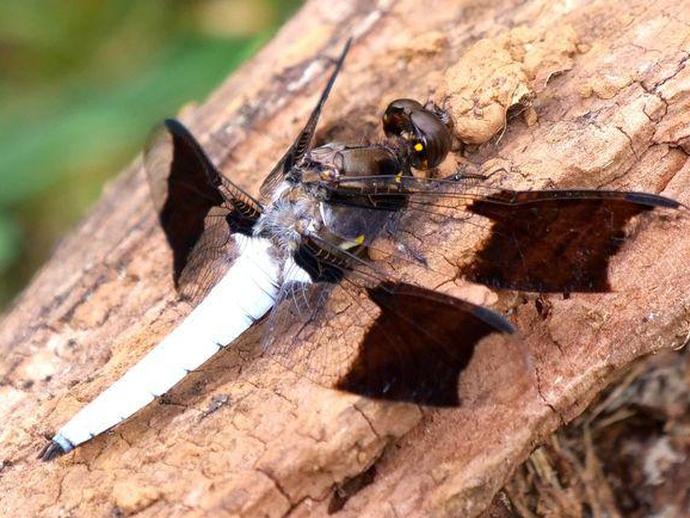
Ben here with today's edition of #BenInNature presented by our friends at Carter Bank & Trust!
June 16, 2021
Ben here with today's edition of #BenInNature presented by our friends at Carter Bank & Trust! This dragonfly isn't nearly as rare as the one we looked at earlier this week; in fact, it's common across most of North America. However, it's definitely one of the more unusual-looking dragonflies you're liable to come across! This is a male Plathemis lydia, also known as the common whitetail. Only mature males of this species have white abdomens, and they display them to other males as a territorial threat. The white coloration of the abdomen is caused by wax particles, giving it a "frosted" appearance; this is known as "pruinescence," and you can also spot pruinescence on annual cicadas! Common whitetails are most often ...

It's time for the Tuesday edition of #BenInNature presented by our friends at Carter Bank & Trust!
June 15, 2021
It's time for the Tuesday edition of #BenInNature presented by our friends at Carter Bank & Trust! Shortly after a huge storm blew through on Sunday night, I found this little guy hanging out near my back porch! This is Lithobates clamitans, the green frog! This particular green frog is most likely a female based on the size of the tympanum, which is the circular patch behind a frog's eye. The tympanum is basically an eardrum and it functions just like our own eardrums, transmitting sound waves to the middle and inner ear. In female green frogs, the diameter of the tympanum is about the same size as the frog's eye, while males have tympanums that are much larger than their eyes. The green frog is found throughout most ...
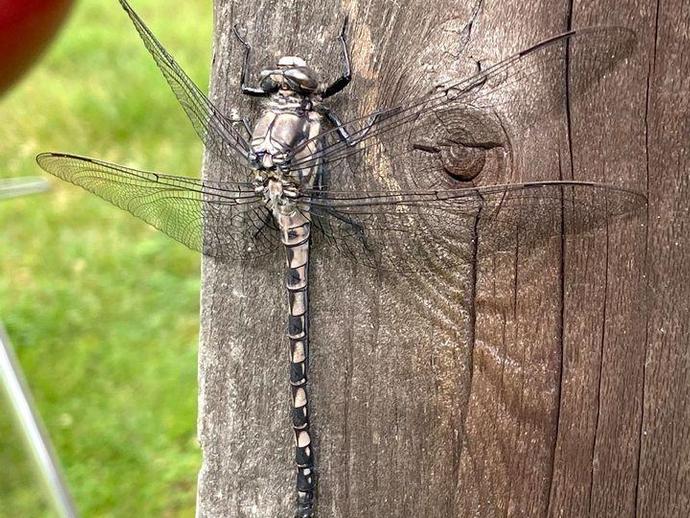
Ben here with the Monday edition of #BenInNature presented by our friends at Carter Bank & Trust!
June 14, 2021
Ben here with the Monday edition of #BenInNature presented by our friends at Carter Bank & Trust! This is Tachopteryx thoreyi, commonly known as the gray petaltail, and it's probably the most unusual dragonfly in Virginia! What makes the gray petaltail so unusual? For one, it's our most primitive dragonfly and it's the only surviving member of its genus. These dragonflies are virtually identical to the petaltails that were buzzing among the dinosaurs during the Jurassic period! Two, these dragonflies have a lifestyle quite unlike any other dragonfly species in Virginia. We generally associate dragonflies with water. The adults tend to be found near ponds, lakes, rivers, and other bodies of water, while the nymphs are ...

We're reaching into the archives for today's #BenInNature update presented by our friends at ...
June 13, 2021
We're reaching into the archives for today's #BenInNature update presented by our friends at Carter Bank & Trust! The following post was originally published on July 2, 2020. Grab your bucket because the blackberries are ripening! Rubus allegheniensis, also known as the Alleghany blackberry or common blackberry, can be found pretty commonly throughout eastern and central North America. Given the thorns and the leaf shape of this plant, you might not be surprised to learn that it's a member of Rosaceae, the rose family. Common blackberry plants require at least partial sun, and they need full sun to develop quality fruit. They can form pretty intimidating patches, so if you're growing them at home you'll want to thin the ...
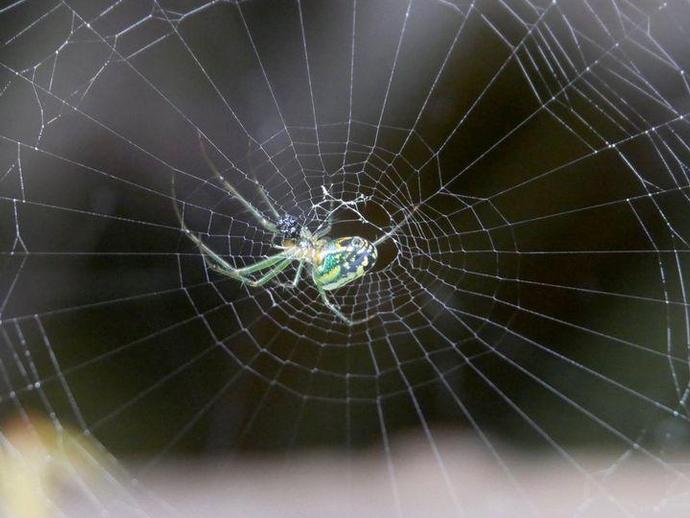
We're reaching into the archives for today's #BenInNature update presented by our friends at ...
June 12, 2021
We're reaching into the archives for today's #BenInNature update presented by our friends at Carter Bank & Trust! The following post was originally published on July 1, 2020. In my opinion, the orchard spider (Leucauge venusta) is one of the most beautiful spiders in Virginia. I realize that many people would scoff at the idea of a beautiful spider, but just look at that abdomen! Doesn't it make you want to go out and buy a bag of jellybeans? OK, I'll stop. These striking spiders are members of the long-jawed orb weaver family (Tetragnathidae), and they can be found throughout much of the east coast and extend into the central US. If you feel like you've never seen one before, chances are that you simply overlooked it; ...
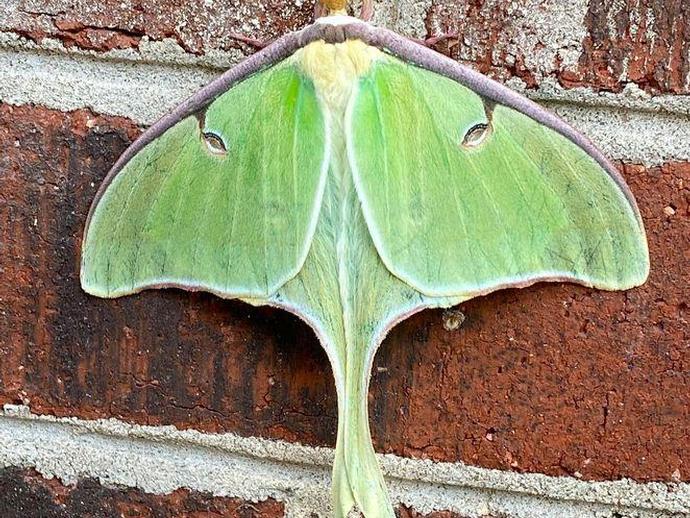
It's time for the Friday edition of #BenInNature presented by our friends at Carter Bank & Trust!
June 11, 2021
It's time for the Friday edition of #BenInNature presented by our friends at Carter Bank & Trust! It took me a while, but I finally managed to track down everyone's favorite moth: Actias luna, the Luna moth! While Virginia has a number of large, charismatic moths, the Luna moth seems to be the winner of most moth popularity contests. These large moths (they can have a wingspan of 4.5 to 7 inches!) are found in or near deciduous hardwood forests and are native to eastern North America. In the northern part of their range, they have one brood per year between May and July; in the more southern part of their range, they have up to three broods per year and can be found from March through September. Luna moth caterpillars ...
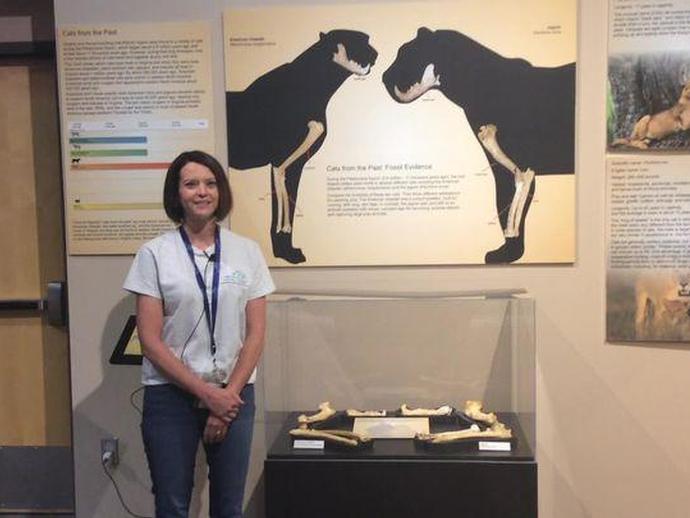
Cheetahs and jaguars in Virginia?
June 11, 2021
Cheetahs and jaguars in Virginia? Many years ago, such animals did roam the land we now call Virginia! In this episode of "Museum Minute", VMNH Education Manager Christy Deatherage is in the museum's "Wild About Cats" special exhibit gallery to highlight some of the big cats that lived in what we now call Virginia during the Pleistocene epoch, which ended nearly 11,700 years ago! ABOUT MUSEUM MINUTE The Virginia Museum of Natural History has a spectacular assortment of displays within its exhibit galleries! Some displays are unforgettable, while others don't always get the attention they deserve. Through the original series "Museum Minute", museum educators highlight various displays throughout the exhibit galleries, while ...
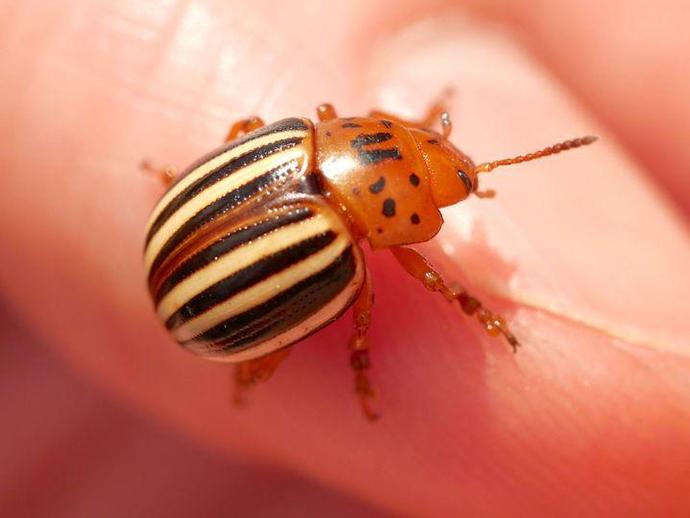
It's time for the Thursday edition of #BenInNature presented by our friends at Carter Bank & ...
June 10, 2021
It's time for the Thursday edition of #BenInNature presented by our friends at Carter Bank & Trust! Green-thumbed readers out there might have an instant flash of recognition when they see this photo. At first glance, this insect looks virtually identical to the Colorado potato beetle (Leptinotarsa decemlineata), one of the most destructive and prolific pests of potato crops across the country. However, this is NOT a Colorado potato beetle; it's actually the false potato beetle (Leptinotarsa juncta)! The easiest way to tell the difference is that the false potato beetle has a faint orange stripe on either side of its elytra (the hard shell that covers the flight wings). The Colorado potato beetle does not have this ...

It's time for today's edition of #BenInNature presented by our friends at Carter Bank & Trust!
June 9, 2021
It's time for today's edition of #BenInNature presented by our friends at Carter Bank & Trust! This is the fifteen spotted lady beetle (Anatis labiculata), and it's one of my favorite critters I've found since I started doing these daily nature posts more than a year ago! If you'll indulge me in a brief story, I'll explain why. Back when I was a little kid, lady beetles were my entry point into entomology. I think that's true for a lot of young folks. Lady beetles are cute; they're often brightly colored, so they're easy to spot; they're completely harmless; and they're also voracious predators of aphids, the ultimate garden pest. It's hard not to like lady beetles (with the exception of the invasive multicolored Asian ...

It's time for another #BenInNature update presented by our friends at Carter Bank & Trust!
June 8, 2021
It's time for another #BenInNature update presented by our friends at Carter Bank & Trust! Yesterday, we looked at a sub-par photo of an unusual critter; today, let's look at a great photo of something much more common! This is a green bottle fly belonging to the genus Lucilia. According to VMNH Executive Director and fly expert Dr. Joe Keiper, it's sometimes necessary to count the individual bristles on wing veins to narrow it down to the exact species, so we'll just leave it at genus for now! Green bottle flies are slightly larger than house flies, and they can be found in tropical and temperate environments around the world. Every other fact I'm about to share about these flies ranges from "kind of gross" to "I ...
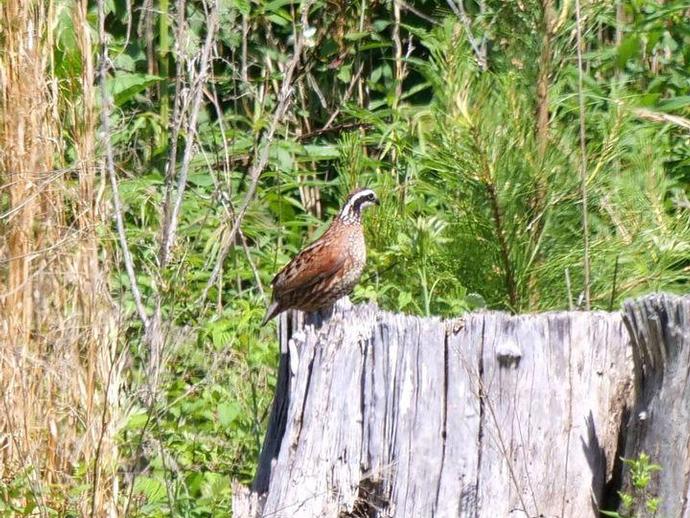
It's time for another #BenInNature update presented by our friends at Carter Bank & Trust!
June 7, 2021
It's time for another #BenInNature update presented by our friends at Carter Bank & Trust! I'll be the first to admit that this isn't the greatest picture, but the subject is so cool that I had to use it anyway: this is Colinus virginianus, the northern bobwhite! Also known as the Virginia quail, the bobwhite is native to parts of Canada, the U.S., Mexico, and Cuba. In the U.S., it is mostly found east of the Rockies. The bobwhite belongs to the family Odontophoridae, also known as the New World quails, and it's the only quail species native to Virginia! Northern bobwhites used to be much more common than they are today. In fact, it's estimated that their populations declined 85 percent between 1966 and 2014, and they ...
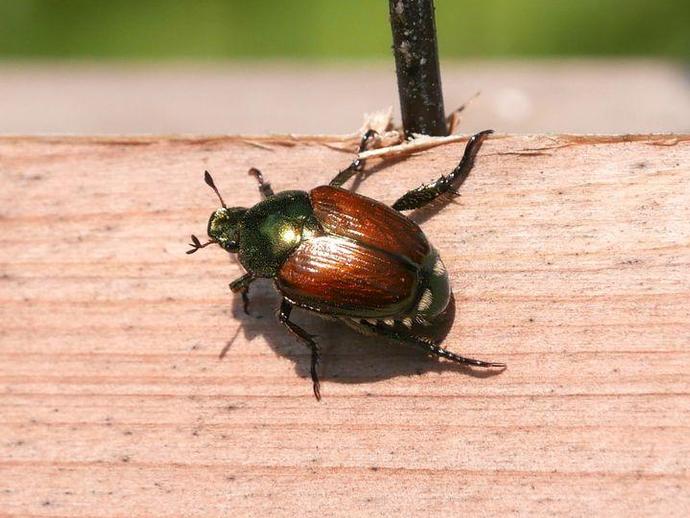
We're reaching into the archives for today's #BenInNature update presented by our friends at ...
June 6, 2021
We're reaching into the archives for today's #BenInNature update presented by our friends at Carter Bank & Trust! The following post was originally published on June 30, 2020. Here we see a Japanese beetle (Popillia japonica) quietly contemplating flying over to my long-suffering persimmon sapling to continue skeletonizing its leaves. As the common name suggests, these beetles are native to Japan, and they're not terribly destructive in their home country because they're kept in check by natural predators. Elsewhere, however, these beetles are a menace to a wide variety of agricultural crops. Japanese beetles were first discovered in the U.S. in 1916 at a nursery near Riverton, New Jersey. It's believed they were ...
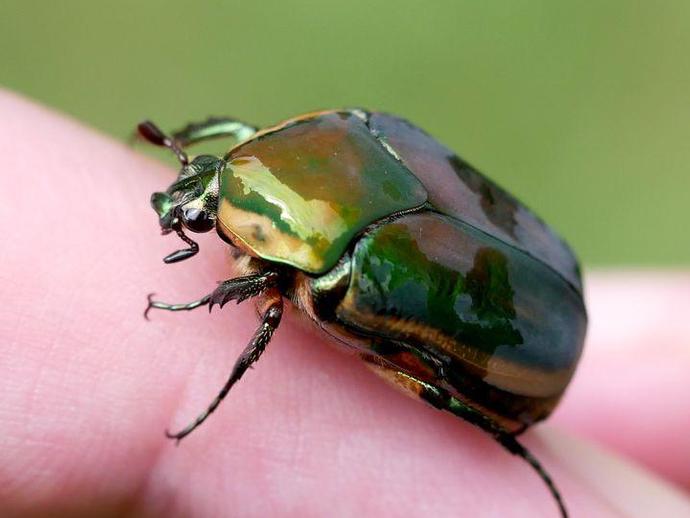
We're reaching into the archives for today's #BenInNature update presented by our friends at ...
June 5, 2021
We're reaching into the archives for today's #BenInNature update presented by our friends at Carter Bank & Trust! The following post was originally published on June 29, 2020. When I was a little kid, my grandpa showed me how to tie a string around the leg of a green June beetle (Cotinis nitida). The beetle will take flight, pull all the slack out of the string, and then fly around your head in a circle. This is probably not the nicest thing to do to June beetle, but it was pretty entertaining! As their name suggests, these beetles start showing up around June here in southwest Virginia, and they can usually be spotted flying low over yards. It's believed that they're attracted to decaying organic matter because it ...

It's time for #BenInNature presented by our friends at Carter Bank & Trust!
June 4, 2021
It's time for #BenInNature presented by our friends at Carter Bank & Trust! Ahh, the fishing spider. Even if you love and respect arachnids, the fishing spider can be a bit ... startling. While these are some of Virginia's largest spiders by leg span, they're also not a threat to us humans. I'm pretty sure that this particular fishing spider is Dolomedes tenebrosus, also called the dark fishing spider (it's sometimes hard to tell the difference between this species and Dolomedes scriptus, the striped fishing spider). A large female fishing spider can have a body about an inch long and a leg span of more than three inches, which may not sound like a whole lot until you see one in person. The pictured spider is actually ...

VMNH Educator Terri Robertson is inside the Saltville gallery of the Uncovering Virginia exhibit ...
June 4, 2021
VMNH Educator Terri Robertson is inside the Saltville gallery of the Uncovering Virginia exhibit to highlight the museum's muskox taxidermy specimen in this latest episode of "Museum Minute"! ABOUT MUSEUM MINUTE The Virginia Museum of Natural History has a spectacular assortment of displays within its exhibit galleries! Some displays are unforgettable, while others don't always get the attention they deserve. Through the original series "Museum Minute", museum educators highlight various displays throughout the exhibit galleries, while providing intriguing facts you may not have known. "Museum Minute" is made possible thanks to VMNH Corporate Partners Carter Bank & Trust (www.cbtcares.com) and Boxley Materials Company (www. ...

This week, VMNH Myriapodologist Dr
June 3, 2021
This week, VMNH Myriapodologist Dr. Jackson Means and Associate Curator of Recent Invertebrates Dr. Kal Ivanov were joined by Coleopterist (a person who studies or collects beetles) and all-around brilliant bug guy Dr. Art Evans for a trip to the spectacular Grayson Highlands State Park. The day was overcast and chilly; perfect conditions for finding millipedes, ants, and other soil-dwelling critters! Among the day's discoveries were two species of the twisted-claw millipedes (genus Nannaria), a beautiful Scolopocryptops centipede, and a rarely seen giant cimbicid bee (Trichiosoma triangulum)! Overall, it was an exciting day of exploration for our intrepid scientists, and - as always - we encourage you to get out into ...
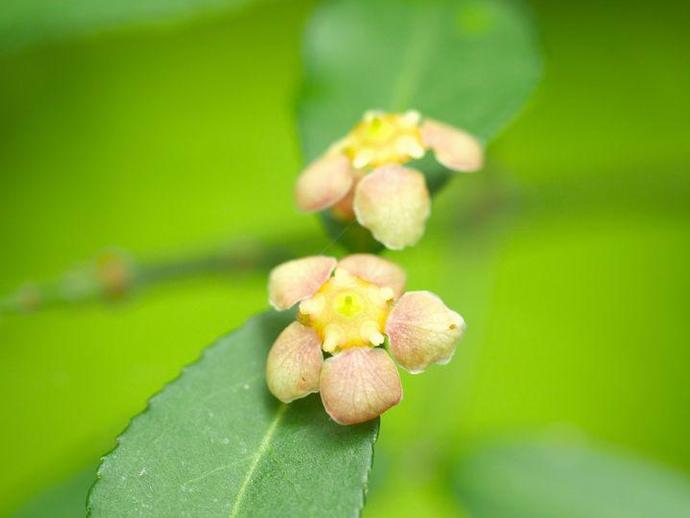
It's time for the Thursday edition of #BenInNature presented by our friends at Carter Bank & ...
June 3, 2021
It's time for the Thursday edition of #BenInNature presented by our friends at Carter Bank & Trust! This is Euonymus americanus, also called strawberry bush or hearts-a-bustin'. The flowers may not look like much right now, but once fall arrives, this will become a very unusual-looking plant! After the flowers have been fertilized, strawberry bush produces some very unique fruit capsules. The capsules are about half an inch wide, dark red, and covered with small spines or bumps. Eventually, the capsule will split wide open into five different sections, revealing five bright red seeds! These plants are native to the southeastern U.S., and if you're looking for an awesome native shrub to add to your property, it's hard ...
JOB POSTING: ADMINISTRATIVE COORDINATOR An exceptional opportunity in administration at the ...
June 2, 2021
JOB POSTING: ADMINISTRATIVE COORDINATOR An exceptional opportunity in administration at the Virginia Museum of Natural History (VMNH) is now available! Working directly with the Executive Director of VMNH and the museum's Leadership Team, the Administrative Coordinator will provide logistical support of key areas of operation to ensure effective administrative operation. Follow the link to learn more about this exciting opportunity and how to apply. Closing date for applications is June 13, 2021.
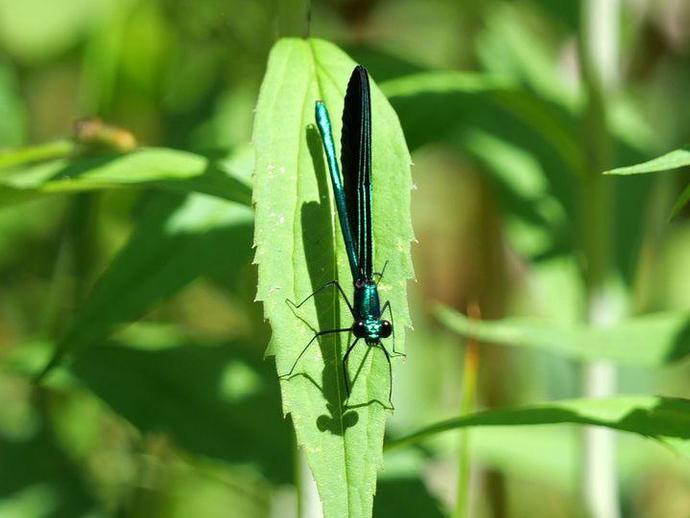
It's time for today's edition of #BenInNature presented by our friends at Carter Bank & Trust!
June 2, 2021
It's time for today's edition of #BenInNature presented by our friends at Carter Bank & Trust! For my money, the ebony jewelwing (Calopteryx maculata) is one of the most beautiful insects you'll find here in Virginia. The pictured ebony jewelwing is a male; the males have metallic green bodies (which can sometimes appear blue depending on the light) and jet-black wings, while the females have slightly duller bodies and smoky-colored wings with a white spot at the end of each wing. When you see an ebony jewelwing fluttering by, it's easy to mistake it for a butterfly. However, these are actually damselflies, which belong to the same order as dragonflies. Just like dragonflies, they're aerial predators, and when you see ...
Archives
2025
2024
2023
2022
2021
2020
2019
2018
2017
2016
2015
2014
2013
2012
2011
2010
2009
2008

Please Visit Us Soon
Hours:
Tuesday - Saturday: 10am - 4pm
Sunday: Noon to 4pm (Memorial Day Weekend through Labor Day Weekend only)
Monday: Closed
Admission:
$12 for ages 18-59
$6 for ages 3-17, seniors 60+, and college students
FREE for children under 3, museum members, members of ASTC Passport participating institutions, and EBT cardholders
My 4 year old son loves going to the museum. The exhibits are educational, interactive and kid-friendly.
”

 Hours & Admissions
Hours & Admissions Directions
Directions